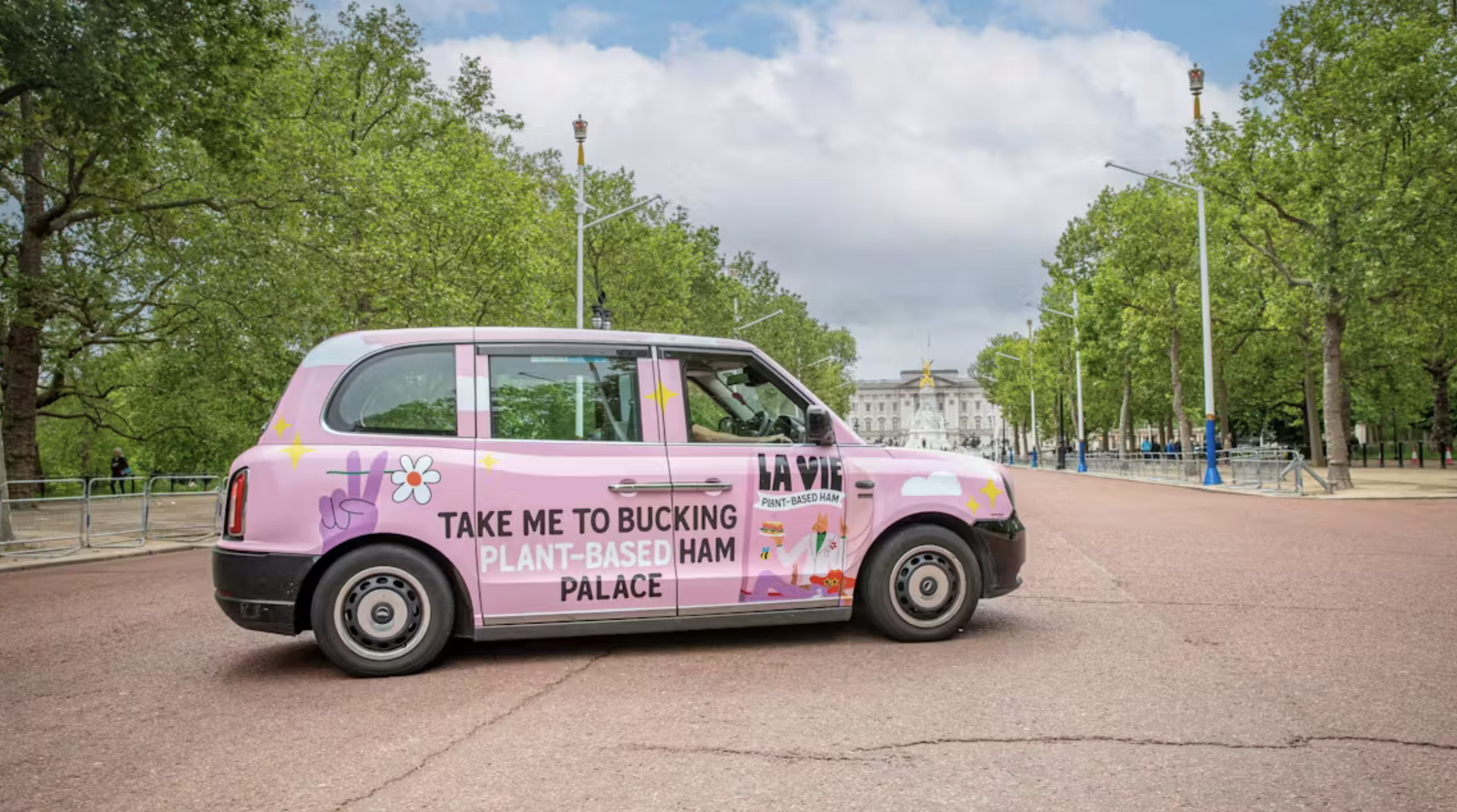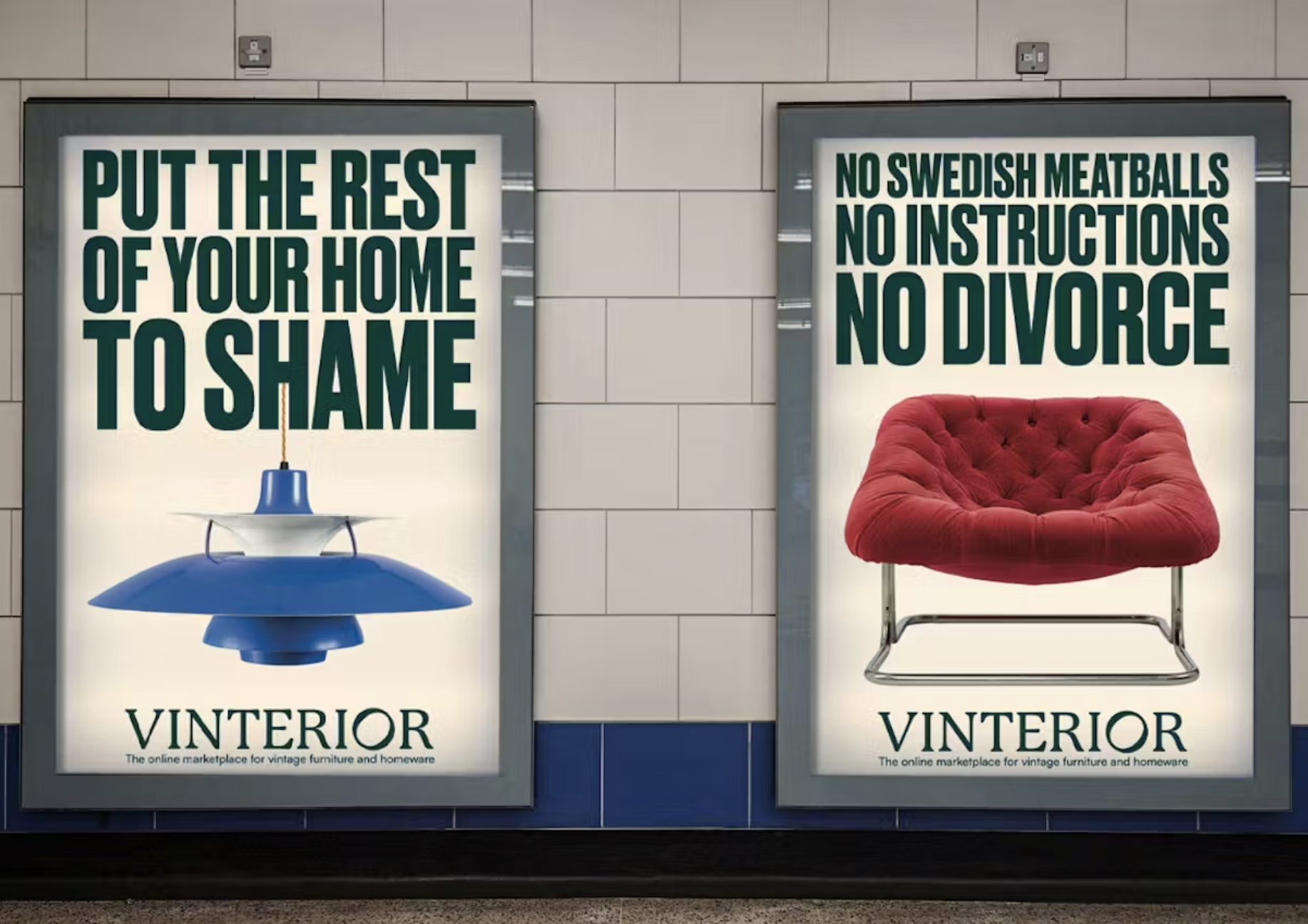“If it sounds like writing, I rewrite it,” Elmore Leonard, the great American crime novelist once said. It’s a sentiment repeated in various ways when it comes to copy – “kill your darlings” said William Faulkner; from Dr Seuss, “the writer who breeds more words than he needs, is making a chore for the reader who reads”. Good copy – good writing, and good editing – comes from clarity.
The last few weeks have seen an interesting offering of copy-centric marketing such as La Vie’s OOH promotion of their plant-based ham product, from Albert Albert and Andrew Dobbie, seen on billboards around London monuments and tube network. The campaign relied almost entirely on making copy work. Billboards, posters, the strategic placement of a taxi ad sitting outside of Buckingham Palace – renamed Bucking Plant-Based Ham Palace – popped up overnight. The latter was enough to win them a well-earned ad of the week from The Drum.
La Vie’s campaign hit that editorial sweet spot – simple ideas and simple language, communicated to the right audience in the right way. Zooming in on cultural or social patter around vegan products, acknowledging how plant-based foods can sometimes (often?) divide families, or the internal tussle of “giving up ham sandwiches”, gave the copy real grounding. “Your childhood ham, if you were born in 2024” – one of La Vie’s campaign lines – is one of those simple lines that feels surprisingly natural, and quietly brilliant.
What the ads have done is differentiate La Vie from the rest of the market by showing understanding and genuine insight into consumer lives, rather than focusing on quality of the product alone. It’s the same strategy that underpinned the success of Vinterior’s recent campaign – more OOH, copy-led ads that took Swedish meatballs to task, and promised “no divorce” for consumers who choose Vinterior, the second-hand and vintage e-retailer over a trip round the big blue box. As consumers we were challenged over our reliance (and love-hate relationship) with IKEA’s long-reigning mass-produced flatpack era. Who doesn’t feel at least mildly attacked by reading “You’re better than flatpack” on the side of the bus? Or being told to “prove you’re not boring” on a billboard? Playful copy, just on the right side of snarky, set Vinterior apart as a daring, unique and more sustainable way to shop for your home. Plus, the ads looked great, too.
There are no real hard and fast rules to good copy, otherwise we would all get it right the first time. But our editorial team has a few tips for a nudge in the right direction.
Clever is the blueprint, not the cherry on top
You don’t need to over-complicate language if the idea driving it is tight enough. In fact, copy should, in the most part, come relatively easily if a campaign is robust and messaging is crystal clear. Work out exactly what you want to say before you say it, then simplify it again. The Ordinary nailed this earlier in the month with their latest OOH ads. Much of the ad itself is white space – in line with the brand’s clean, monochromatic identity – and this time they stripped the copy right back to match. The entire ad listed just ingredients, highlighted by a simple pipette, or rich smudge of moisturiser. Great idea, bravely understated copy that works.
The audience always comes first
Visualise who they are as clearly as you possibly can, and keep coming back to them. Map out their lives – what’s important to them? Where do they live and work? Where do they shop, or go on holiday? What are the problems your brand or product could solve for them? What sort of reaction are they having when reading your copy? Why? It can be useful to start from there and work backwards. The audience is at the heart of La Vie’s copywriting: it centres around family, and family values. They’ve recognised that their consumer is aware of buying products that reflect their desires for tangible change in the world – see their ‘childhood ham’ line.
When you’re ready to write, start with the basics and repeat
Sometimes there’s nothing to do but practise. Even if that’s for just one line. One unorthodox but tried and tested technique is to take a clean document, write out what you want to say, not worrying how long or clunky or ugly it reads. Then, on a new line, write it again in a slightly different way. Or a shorter way. Or write the opposite of what you want to say, and see what that brings out. Try not to overthink – type quickly and leave in all the mistakes and terrible versions (if you do it right, there should be plenty). It might be the eighth line or line 108, but soon enough the language will naturally tighten up and the right message, with the right clarity, should start to come through.
Most importantly, good copy takes time and thought. A line is only simple because you’ve done the work leading up to the writing part. But it’s all worth it when the right combination of insight and creativity comes along and you just know you’ve got it right. Still, remember – if it sounds like writing, rewrite it. You’ll thank yourself later.


